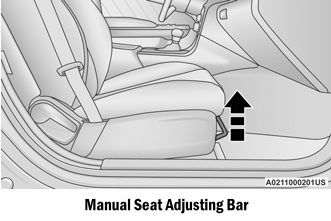Dodge Charger: TRAILER TOWING / Towing Requirements
Dodge Charger 2011-2025 Owner's Manual / STARTING AND OPERATING / TRAILER TOWING / Towing Requirements
To promote proper break-in of your new vehicle drivetrain components, the following guidelines are recommended.
WARNING!
- Make certain that the load is secured in the trailer and will not shift during travel. When trailering cargo that is not fully secured, dynamic load shifts can occur that may be diffi- cult for the driver to control. You could lose control of your vehicle and have a collision.
- When hauling cargo or towing a trailer, do not overload your vehicle or trailer. Over- loading can cause a loss of control, poor performance or damage to brakes, axle, engine, transmission, steering, suspension, chassis structure or tires.
- Safety chains must always be used between your vehicle and trailer. Always connect the chains to the hook retainers of the vehicle hitch. Cross the chains under the trailer tongue and allow enough slack for turning corners.
- Vehicles with trailers should not be parked on a grade. When parking, apply the parking brake on the tow vehicle. Put the tow vehicle transmission in PARK. Always, block or "chock" the trailer wheels.
- GCWR must not be exceeded.
- Total weight must be distributed between the tow vehicle and the trailer
such that the following four ratings are not exceeded:
- Max loading as defined on the “Tire and Loading Information” placard.
- GTW
- GAWR
- Tongue weight rating for the trailer hitch utilized.
Perform the maintenance listed in the “Scheduled Servicing” for the proper maintenance intervals. When towing a trailer, never exceed the GAWR or GCWR ratings.
CAUTION!
- Do not tow a trailer at all during the first 500 miles (805 km) the new vehicle is driven. The engine, axle or other parts could be damaged.
- Then, during the first 500 miles (805 km) that a trailer is towed, do not drive over 50 mph (80 km/h) and do not make starts at full throttle. This helps the engine and other parts of the vehicle wear in at the heavier loads.
- Towing Requirements — Tires
- Towing Requirements — Trailer Brakes
- Towing Requirements — Trailer Lights And Wiring
 Trailer And Tongue Weight
Trailer And Tongue Weight
Never exceed the maximum tongue weight stamped on your fascia/bumper or trailer
hitch.
CAUTION!
Always load a trailer with 60% of the weight in the front of the trailer...
 Towing Requirements — Tires
Towing Requirements — Tires
Do not attempt to tow a trailer while using a compact spare tire.
Do not drive more than 50 mph (80 km/h) when towing while using a full size
spare tire...
Other information:
Dodge Charger 2011-2025 Owner's Manual: Tire Service Kit Components And Operation
Sealant Bottle Deflation Button Power Button Sealant Hose (Clear) Pressure Gauge Mode Select Knob Power Plug (located on the bottom side of the Tire Service Kit) Air Pump Hose (Black) Using The Mode Select Knob And Hoses Your Tire Service Kit is equipped with the following symbols to indicate the air or sealant mode...
Dodge Charger 2011-2025 Owner's Manual: Windshield Wiper Operation
Rotate the end of the multifunction lever to the first detent, past the intermittent settings for low-speed wiper operation, or to the second detent past the intermittent settings for high-speed wiper operation. CAUTION! Always remove any buildup of snow that prevents the windshield wiper blades from returning to the “park” position...
Categories
- Manuals Home
- Dodge Charger Owners Manual
- Dodge Charger Service Manual
- To Disarm The System
- Blind Spot Monitoring (BSM) — If Equipped
- High/Low Beam Switch, Automatic High Beam — If Equipped
- New on site
- Most important about car
Manual Front Seat Forward/Rearward Adjustment
Some models may be equipped with a manual front passenger seat. The seat can be adjusted forward or rearward by using a bar located by the front of the seat cushion, near the floor.

Copyright © 2025 www.docharger.org
